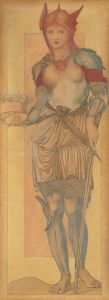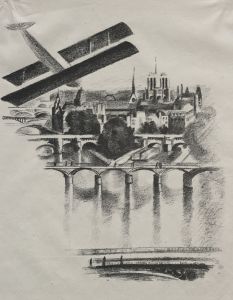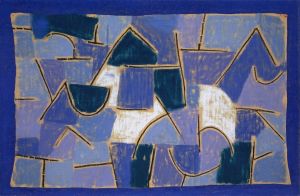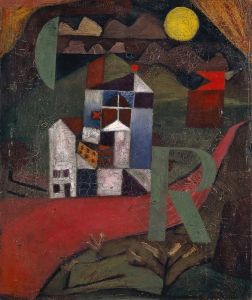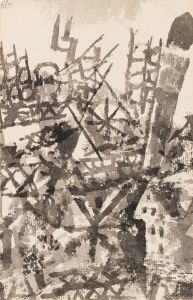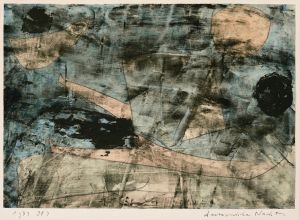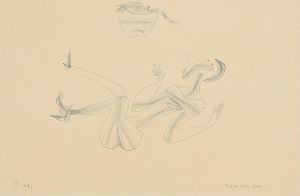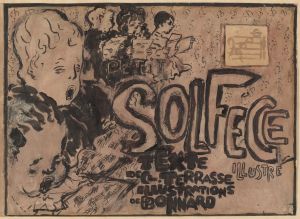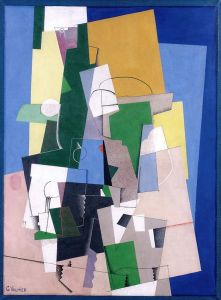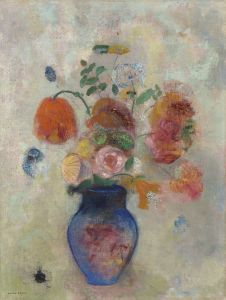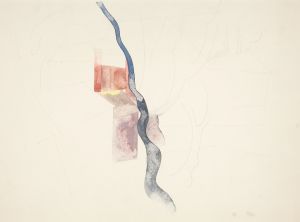
Bäume am Wasser
A hand-painted replica of Paul Klee’s masterpiece Bäume am Wasser, meticulously crafted by professional artists to capture the true essence of the original. Each piece is created with museum-quality canvas and rare mineral pigments, carefully painted by experienced artists with delicate brushstrokes and rich, layered colors to perfectly recreate the texture of the original artwork. Unlike machine-printed reproductions, this hand-painted version brings the painting to life, infused with the artist’s emotions and skill in every stroke. Whether for personal collection or home decoration, it instantly elevates the artistic atmosphere of any space.
Paul Klee's "Bäume am Wasser" (Trees by the Water) is a notable work by the Swiss-born German artist, who is renowned for his highly individual style that was influenced by movements in art that included Expressionism, Cubism, and Surrealism. Klee's work is characterized by a playful use of color and form, and he often drew inspiration from nature, music, and his own imagination.
"Bäume am Wasser" was created during a period when Klee was deeply engaged with exploring the relationship between color and form. This painting reflects Klee's interest in the natural world and his ability to transform simple landscapes into complex compositions that evoke a sense of harmony and balance. The title, which translates to "Trees by the Water," suggests a serene natural setting, a theme that Klee often revisited in his work.
Klee's artistic journey began in the early 20th century, and he was associated with several influential art movements. He was a member of the German Expressionist group Der Blaue Reiter, alongside artists like Wassily Kandinsky and Franz Marc. This group was known for its emphasis on the emotional and spiritual aspects of art, which is evident in Klee's work. His time at the Bauhaus, a revolutionary art school in Germany, further shaped his approach to art, emphasizing the integration of art, craft, and technology.
In "Bäume am Wasser," Klee employs a unique technique that combines elements of abstraction with recognizable forms. The painting likely features a stylized depiction of trees and water, rendered in a way that emphasizes the interplay of colors and shapes. Klee's use of color is particularly noteworthy; he often used a vibrant palette to convey mood and emotion, and his work is known for its rhythmic and musical qualities.
Klee's approach to painting was deeply influenced by his interest in music. He was an accomplished violinist, and this musical background informed his understanding of rhythm and harmony, which he translated into visual art. In "Bäume am Wasser," one might observe how the arrangement of forms and the use of color create a visual rhythm that echoes musical composition.
Throughout his career, Klee produced a vast body of work that includes paintings, drawings, and prints. His work is characterized by a whimsical, childlike quality, yet it also possesses a profound depth that invites viewers to explore the underlying themes and emotions. Klee's art often defies easy categorization, as he continuously experimented with different styles and techniques.
"Bäume am Wasser" exemplifies Klee's ability to blend abstraction with figuration, creating works that are both visually engaging and intellectually stimulating. His legacy as an artist is marked by his innovative approach to color theory and his ability to convey complex ideas through simple forms. Today, Klee's work is celebrated for its originality and its enduring influence on modern art.
While specific details about "Bäume am Wasser" may be limited, the painting remains an important part of Klee's oeuvre, reflecting his unique vision and his contribution to the development of modern art. Klee's work continues to be studied and admired for its inventive use of color and form, and his influence can be seen in the work of many contemporary artists.





